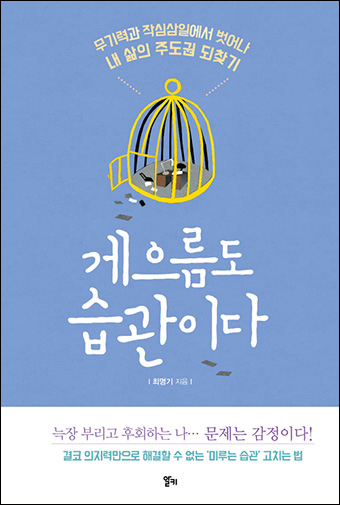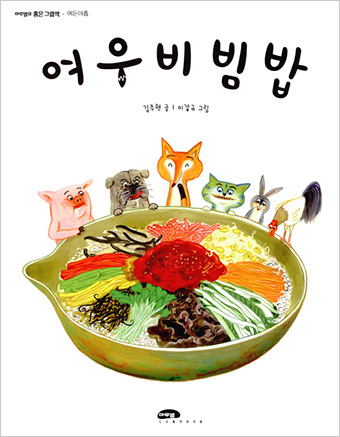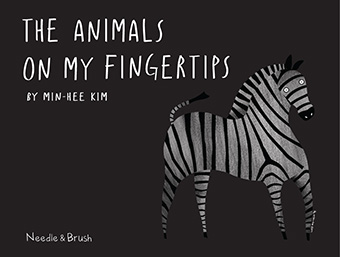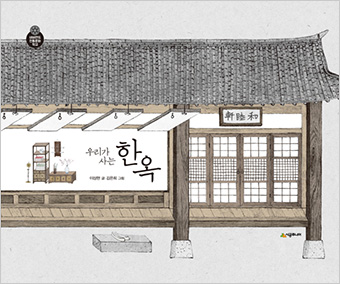Export Prospects of Korean Books
KPIPA’s Choice for Supporting Abstract · Sample Translation
2017.6.30
Laziness Is a Habit

1. Publisher
Sigongsa Co. Ltd.
http://www.sigongsa.com/main/main.php
2. Publication
Title | Laziness Is a Habit
Author | Myeong-gi Choi
3. Book Details
Pages | 264
Format | 146☓215 (mm, width☓length)
Binding | Paperback
Publication Date | January 5, 2017
ISBN | 9788952777768
4. Point of Contact
Name | Sunju Jung
Phone | +82-2-2-46-2895
E-mail | alliswell1224@sigongsa.com
5. Marketing Information
Rights Sold | Thailand, Indonesia
Copies Printed, Sales Rank | A best seller in the self-help category
Subject | Escaping from lethargy and short-lived resolutions and reclaiming control over one’s life
Target Readers | Anyone who wants a complete hold on their life Media Reviews & Advertisement Copy | Putting things off only to regret it later: the problem is your emotions! How to fix the habit of procrastination, which cannot be solved by sheer determination
6. Introduction
About the Author
After graduating from the College of Medicine at Chung-Ang University, Myeong-gi Choi worked as a psychiatrist at Asan Medical Center. Then, wanting to better analyze people's minds and find an alternative approach to psychiatry by integrating different sciences, he earned an MBA at Duke University in the United States—unusual for a psychiatrist—where he completed the Health Sector Management program. Upon returning to Korea, he took advantage of his unique experience as a psychiatrist with a background in business administration and founded the Choi Myeong-gi Psychiatry Clinic and the Cheongdam Harvard Psychology Center to study in greater depth and share his findings on ways to seek a balance in life by managing the mind.
He is currently a clinical advisor at Asan Medical Center’s Department of Psychiatry and an external professor of psychiatry at Chung-Ang University’s College of Medicine. He has appeared on TV shows such as I Live Alone and We Got Married (MBC) and counseled entertainers who appeared on the shows.
He has also provided incisive psychological analyses of a number of cases on TV shows such as We Want to Know the Truth (SBS), JTBC Newsroom, and PD Notebook (MBC).
Choi is the author of Worrying Is a Habit, Small Wounds Hurt More, What Makes You Work?, Your Mind Meets Management, and The Good-Parent Complex.
About the Book
Putting things off only to regret it later: the problem is your emotions!How to fix the habit of procrastination, which cannot be solved by sheer determinationTime is running out and you have a pile of things to do, but you just don't want to do anything. You have a test tomorrow, but you keep finding yourself getting distracted. You planned to jog an hour a day from the start of the New Year, but quit after a couple of days.Each time this happens, we think, "Why do I have such weak willpower?"
Often we think that the problems of lethargy and short-lived resolutions, which torture us, are solely a matter of willpower.But is this really so?
To start with the conclusion: this is absolutely not the case. In his latest book, Laziness Is a Habit, Dr. Choi Myeong-gi asserts that laziness is not a problem of willpower but of emotions. He says that people who suffer from habitual laziness are likely also suffering emotional problems, such as anxiety, anger or loneliness. For example, a person with high levels of anxiety may not be able to focus on one thing and may constantly suffer from all kinds of thoughts popping up that make her miss the important things. A person who is angry at a certain object, especially his parents, may transfer that anger onto his teacher or supervisor and keep putting off assignments. Meanwhile, people suffering from loneliness may fall into endless lethargy with thoughts like, "What's the use of doing this?" This book describes nine emotions that trigger such laziness and explains in detail how to manage each one. This is the first step in escaping from that wearying laziness.
Once you have solved the emotional problem, next you need to eliminate the obstacles to you exercising your willpower. The author introduces seven such obstacles, which include an impatient personality that tires easily when you cannot bear boring things or cannot finish a job quickly; human obstacles that eat away at your time; and difficulties making decisions, which seem to hold you back at every crucial moment. Of course, the book also presents friendly explanations on how to handle these problems.Finally, the book gives the reader a specific roadmap to overcoming laziness and creating a habit of working hard.
At this stage, the most important thing is to become the manager of your daily life. In other words, you can't stop at just escaping from laziness; you need to make a habit of leading your daily life solely according to your will.
You have to change your life from one in which you barely manage to get up when your mom wakes you in the morning, to one in which you wake up by yourself at the sound of the alarm; from one in which you study because you're afraid of getting scolded, to one in which you study and work to gain more satisfaction and accomplish the goals you have set for yourself.
Fox Bibimbap for All

1. Publisher
Marubol Publications
http://www.marubol.co.kr
2. Publication
Title | Fox Bibimbap for All
Author | Kim Joo-hyun
Illustrator | Lee Gap-kyu
3. Book Details
Pages | 42 (including endpaper)
Format | 214 ☓275 (mm, width☓length)
Binding | Hard cover
Publication Date | October 22, 2016
ISBN | 978-89-5663-573-6
4. Point of Contact
Name | Lee Sun-mi
Phone | +82-790-4150(503)
E-mail | sunmi@marubol.co.kr
5. Marketing Information
Awards, Recommendations, and Selections | Recommended for preschool children by Happy Morning Reading in 2017
Subject | Friendship, consideration, harmony, sharing, bibimbap
Target Readers | Children (4 years old ~ elementary school, lower grades)
Media Reviews & Advertisement Copy | A bowl of beautiful flower rice on the table. The story of the fox's bibimbap,which is more delicious when enjoyed together
6. Introduction
About the Author & Illustrator
Kim Joo-hyun (Story)
“I should have held her more. I should have told her I loved her more.” An older and clumsy mother with a lot of regrets. On more days than not, she yells while raising her playful daughter, but still Kim is happiest when she holds her little girl in her arms. Kim is the author of The Gorilla That Reads Books, which won the Borim Creative Picture Book Contest, and Read Books or Eat, and she drew the illustrations for As I Want.
Lee Gap-kyu (Illustrations)
Lee studied painting in college and has been drawing illustrations for children's books for a long time. He illustrated A Glove Tree, Sychnuria, and I Can't Stand It Anymore! He also wrote and illustrated Picking Your Nose, which was awarded the 55th Hankook Publishing Culture Prize in 2014.
About the Book
Fox Bibimbap for All is a picture book about bibimbap, a famous Korean dish. From the perspective of children, the book tells how important it is for different friends to come together and share, just like bibimbap, which gives amazing flavors when a variety of ingredients are mixed together. Fox Bibimbap for All, which is a modern interpretation of a traditional fairy tale, can instill in our children the true meaning of harmony.
THE ANIMALS ON MY FINGERTIPS

1. Publisher
Needle & Brush
http://min-heekim.com/The-Animals-On-My-Fingertips
2. Publication
Title | The Animals On My Fingertips
Author, Illustrator | Min-Hee Kim
English Editor | John Head
3. Book Details
Pages | 32 pages
Format | 311 x 235(mm, Width x Height)
Binding | Hard cover
Format | Touch and Feel Book
Publication Date | 01 June, 2017
ISBN | 979-11-960086-0-4
4. Point of Contact
Name | Min-Hee Kim
Phone | +82-(0)10-6562-4056
E-mail | minheekim1212@gmail.com
5. Marketing Information
Overseas Book Fair | International Book Fair Bologna, Abu Dhabi, etc.2017
1st Edition Print Run | 500
Awards | First prize, Idea Fusion Factory, Kocca, 2017
Subject | An alphabetically illustrated book that visually-impaired children and sighted children can equally enjoy. Introduces animals alphabetically, written from a child's perspective.
Target Readers | Children aged 7 and up
6. Introduction
Artist Introduction
Min-Hee Kim studied Illustration & Animation at Kingston University, United Kingdom. Currently lives and works in Seoul, South Korea.
The Animals on my fingertips is her first book as both author and illustrator.
If you'd like to know more about her work visit : http://min-heekim.com
Book Introduction
The Animals On My Fingertips is an alphabetical animal story book that can be enjoyed equally by visually impaired children and non-visually impaired children alike.
This book has been made out of a desire to create a book that can be shared and enjoyed together without discriminating between disabled and non-disabled. Both can have their way of accessing the book and therefore have different things to share and bring together as a whole.
It consists of unique animal illustrations, short stories and utilizes Braille and raised-lines on the pictures for tactility.The narrative of this book is of a child telling a story of animals from A to Z from his viewpoint, using their senses for a friend who can't see.
How does this little boy explain an anteater to his friend?
You will be able to see new animals that are not typically featured in traditional alphabet books and animal stories that reveal the child's wacky and whimsical thoughts to illuminate them.
Visually-impaired children who cannot access various books can enjoy this unique children's book. It will expand their learning and build confidence in that they can participate and share in the same book culture as their friends. Non-visually impaired children also can draw curiosity and imagination through the experience of closing their eyes and following the raised lines with their fingertips, opening a window onto the visually impaired. At heart it is a book about understanding and caring for different friends.At present we are planning to publish a series of books illustrating concepts such as food, musical instruments, abstract words, occupations and others.
Video link | https://www.youtube.com/watch?v=wH6yDhgB-b0
Traditional Korean Homes

1. Publisher
SigongJunior
http://www.sigongjunior.com
2. Publication
Title | Traditional Korean Homes
Genre | Non-fiction picture books
Author | Lee Sanghyun
Illustrator | Kim Eunhee
3. Book Details
Pages | 48 pages
Format | 250☓300 (mm, width ☓ length)
Binding | Hard cover
Publication Date | 20 February 2017
ISBN | 9788952784872
4. Point of Contact
Name | Irene Lee
Phone | +82-2-2046-2849
E-mail | irene@sigongsa.com
5. Marketing Information
Circulation, Sales Rank | 3,000 copies
Subject | Traditional Korean houses that embody the wisdom of our forebears and ethnic Korean culture
Target Readers | Mid-to-high level elementary schoolers
6. Introduction
About the author
Author | Lee Sanghyun, the author, has studied traditional Korean houses for a long time and runs the Research Center for Traditional Korean Houses, a private institute. He writes and gives lectures with the aim of promoting traditional Korean houses and art.
Illustrator | Kim Eunhee studied architecture at Seoul National University, and plans and executes community art projects. She is currently studying illustration at University of Seoul, and is working on drawing the houses and little workplaces in the area. She was selected as the Illustrator of the Year at the 2016 Bologna Children’s Book Fair.
Overview
A traditional culture series that will bring to readers the pleasure of seeing and the joy of learning.
There’s probably no need to emphasize the importance of learning about one’s traditional culture. As proof, a wide range of books on this topic continues to come out one after another. Some convey this topic through beautiful illustrations, and others through expert description and storytelling. Richly illustrated books, however, mainly target a young readership and tend to lack Information; on the other hand, books rich in information can be difficult to understand due to a shortage of illustrations.
The Neverland Traditional Culture School series helps readers gain a deep understanding of traditional Korean culture, through beautiful, detailed illustrations based on thorough historical research and observation, and a wealth of knowledge from experts in various fields.
Neverland Culture School Series Volume One: Traditional Korean Houses
▶ Taking a look at different parts of beautiful Korean houses
It was in the late Joseon era when great changes came about at home and abroad, and the family of Choi, a government official, are gathered together to discuss some issues. They are faced with two problems: a shortage of rooms for the guests who are coming to attend the daughter’s upcoming wedding; and the threat of thieves, whose numbers have increased in these difficult times, stealing the grains in the storeroom. In the end, the family decides to expand the storeroom and build large servants’ quarters, and fortify the outer wall as well, thereby providing rooms for the guests and guarding against theft.
The book shows the separate areas in the house, and explains what is going on in each. As you read, you can also see beautiful illustrations of the different parts of the house, such as the main building, the men’s quarters, and the yard.
First, the family council is held in the main building, the center of the house. This building is normally occupied by the women of the house, but the whole family gathers here for important meetings and events. Choi, the official, goes to the ancestral shrine with the family and reports to the spirits of the ancestors of his daughter’s upcoming marriage, and sits in the men’s quarters watching the construction of the new servants’ quarters . Eventually, the servants’ quarters are finished and a sturdy wall is placed around the house. Then at last, it’s the wedding day and all in the family, including the bride and groom, gather in the yard. Food is being prepared in the backyard. As you follow the story of Choi’s family, looking in on the different areas of the house, you will come to see what each part of a traditional Korean house looks like, and understand what role it plays.

















































